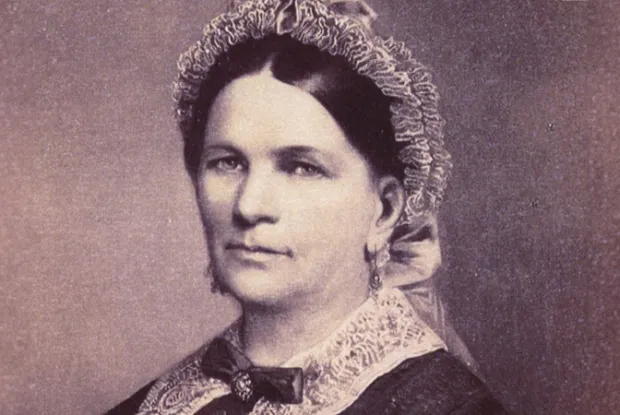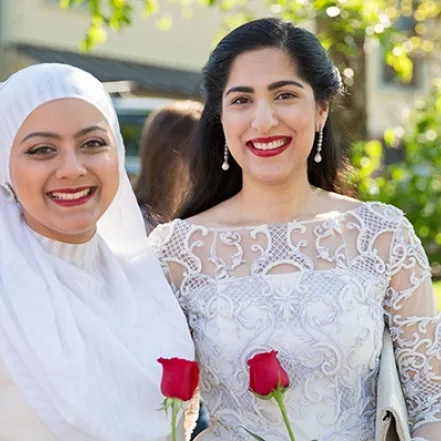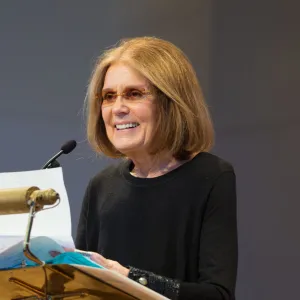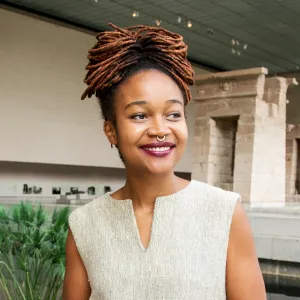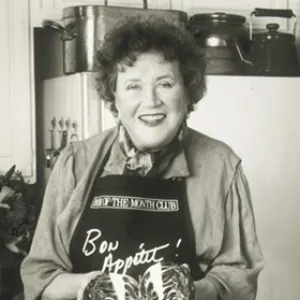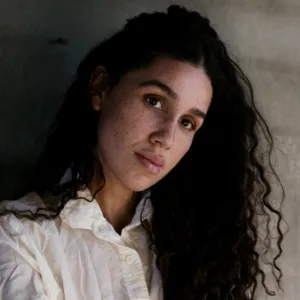History & Traditions
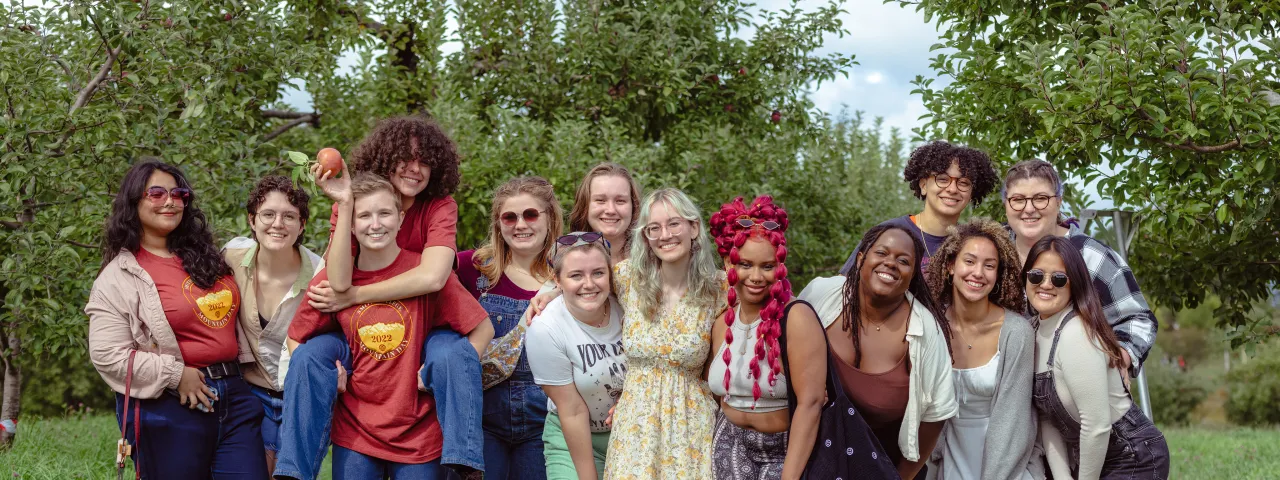
For 150 years, Smith has stood as a beacon for knowledge, equality, and progress—while at the same time upholding unique traditions that have come to define the Smith experience. A college rich in history, Smith has long been nurturing leaders, supporting passions, and empowering its students to change the world.
Our Mission
Smith College educates women of promise for lives of distinction and purpose. A college of and for the world, Smith links the power of the liberal arts to excellence in research and scholarship, thereby developing engaged global citizens and leaders to address society’s challenges.
Smith College is a distinguished liberal arts college committed to providing the highest quality undergraduate education for women to enable them to develop their intellects and talents and to participate effectively and fully in society.
The college began more than 140 years ago in the mind and conscience of a New England woman. The sum of money used to buy the first land (on what had traditionally been the ancestral homelands of the Nonotuck people), erect the first buildings and begin the endowment was the bequest of Sophia Smith. When she inherited a large fortune at age 65, Sophia Smith decided, after much deliberation and advice, that leaving her inheritance to found a women’s college was the best way for her to fulfill the moral obligation she expressed so eloquently in her will:
“I hereby make the following provisions for the establishment and maintenance of an Institution for the higher education of young women, with the design to furnish for my own sex means and facilities for education equal to those which are afforded now in our colleges to young men.”
Smith has changed much since its founding in 1871. But throughout its history there have been certain enduring constants: an uncompromising defense of academic and intellectual freedom, an attention to the relation between college education and the larger public issues of world order and human dignity, and a concern for the rights and privileges of women.
Today the college continues to benefit from a dynamic relationship between innovation and tradition. And while Smith’s basic curriculum of the humanities, arts and sciences still flourishes, the college continues to respond to the new intellectual needs of today’s women—offering majors or interdepartmental programs in engineering, the study of women and gender, neuroscience, film and media studies, Middle East studies, statistical and data sciences and other emerging fields. Were Sophia Smith to revisit Northampton, she would no doubt find her vision realized, as students at her college prepare themselves for exemplary lives of service and leadership.
- Smith is a community dedicated to learning, teaching, scholarship, discovery, creativity and critical thought.
- Smith is committed to creating an inclusive, equitable and accessible educational community founded on the free and open exchange of ideas.
- Smith educates women to understand the complexity of human experience and world cultures through engagement with humanistic, social and scientific ideas.
- Smith creates global citizens, committed to participating in the communities in which they live and to stewarding the resources that sustain them.
About Our Founder
Born just a few miles from Northampton in 1796, Sophia Smith was given a meager education—like many girls of her era—but was an avid reader and believed in the power of educating women. Her last will and testament reads: “It is my opinion that by the education of women, what are called their ‘wrongs’ will be redressed, their wages adjusted, their weight of influence in reforming the evils of society will be greatly increased, as teachers, as writers, as mothers, as members of society, their power for good will be incalculably enlarged...”
Presidents
Some Notable Alums
Famous chefs, Pulitzer Prize winners, political columnists, environmental researchers, film directors, venture capitalists, physicists, poets, playwrights, CEOs—Smithies apply their learning throughout their lives in thousands of professions and communities.
Commencement History
Links to Commencement addresses are given if the speaker has granted permission for Smith College to publish the text of their speech.
2023: Reshma Saujani
2022: Beverly Daniel Tatum
2021: Joy Harjo
2020: Nancy Pelosi
2019: Ai-jen Poo LHD ’19
2018: Rita Dove DFA ’18
2017: Oprah Winfrey DFA ’17
2016: Megan Smith SCD ’16
2015: Juliet García LHD ’15
2014: Ruth J. Simmons LHD ’14
2013: Arianna Huffington LTD ’13
2012: Jane Lynch DFA ’12
2011: Sylvia A. Earle SCD ’11
2010: Rachel Maddow LLD ’10
2009: Tammy Baldwin ’84 LLD
2008: Margaret Edson ’83 LTD
2007: Gloria Steinem ’56 LTD ’88
2006: Jane Lakes Harman ’66 LLD ’94
2005: Rochelle Lazarus ’68 LHD ’05
2004: Judy Woodruff LHD ’04
2003: Madeleine Albright LLD ’03
2002: Lani Guinier LLD ’99
2001: Toni Morrison LTD ’91
2000: Judy Chicago DFA ’00
1999: Jane Alexander DFA ’99
1998: Elizabeth Dole LHD ’98
1997: Marian Wright Edelman LLD ’69
1996: Anna Quindlen LHD ’96
1995: Gloria Steinem '56 LTD ’88
1994: Jane Lakes Harman '66 LLD ’94
1993: Ellen Holtz Goodman LHD ’93
1992: Ann Willis Richards LLD ’92
1991: Robert Fulghum
1990: Helen Caldicott LLD ’90
1989: John Kenneth Galbraith LLD ’89
1988: Jill Ker Conway LTD ’88
1987: Garry B. Trudeau LHD ’87
1986: Joan Ganz Cooney
1985: Beverly Sills LHD ’85
1984: Elizabeth Hardwick LTD ’75
1983: Thomas Mendenhall LLD ’78
1982: Elizabeth Holtzman MSW ’68 LLD ’82
1981: Betty Friedan '42 LittD ’75
1980: Maya Angelou LTD ’75
1979: Adrienne Rich LTD ’79
1978: Margaret Costanza
1977: Madeleine L'Engle ’41
1976: Shana Alexander
1975: Shirley Chisholm LLD ’75
1974: Patricia Roberts Harris
1973: Pauline Kael LTD ’73
1972: Dorothy Nepper Marshall ’35 LLD ’72
1971: Gloria Steinem ’56 LTD ’88
1970: Alan Frank Guttmacher
1969: Thomas Grey Wicker
1968: Edward J. Logue
1967: Nicholas deB. Katzenbach
1966: Arthur M. Schlesinger, Jr.
1965: Archibald MacLeish
1964: Dean Rusk
1963: Rev. Theodore Ferres
1962: Francis T. P. Plimpton
1961: James Barrett Reston
1960: Chester Bowles
1959: Sir Leslie Munro
1958: John F. Kennedy
1957: Ralph Johnson Bunche
1956: Archibald MacLeish
1955: Adlai Ewing Stevenson
1954: Alistair Cooke
1953: John Jay McCloy
1952: Sir Oliver Shewell Franks
1951: John Huston Finley, Jr.
1950: Herbert Davis
1949: Robert F. Bradford
1948: William Clyde DeVane
1947: Edward R. Murrow
1946: C.E. Kenneth Mess
1945: Leverett Saltonstall
1944: Mildred H. McAfee
1944: Max Lerner
1943: Vera Micheles Dean
1943: Herbert Davis
1942: Archibald MacLeish
1941: Roy Dickinson Welch
1940: Wystan Hugh Auden
1939: William Allan Neilson LLD ’42
1938: George Lyman Kittridge
1937: Walter Lippman
1936: William Ernest Hocking
1935: Chauncey Brewster Tinker
1934: Christian Gauss
1933: Alanson Bigelow Houghton
1932: Ralph Barton Perry
1931: Norman Thomas
1930: William Ernest Hocking
1929: Raymond Blaine Fosdick
1928: William Lyon Phelps
1927: Rev. Harry Emerson Fosdick
1926: Paul Shorey
1925: Ada Louise Comstock 1897
1924: Chauncey Brewster Tinker
1923: Rt. Rev. Charles Lewes Slatte
1922: Rev. Samuel McChord Crothers
1921: Roscoe Pound
1920: Frederick James Eugene Woodbridge
1919: Virginia Crocheron Gildersleeve
1918: Bliss Perry
1917: George Edgar Vincent
1916: Charles Summer Whitman
1915: John Huston Finley
1914: Charles E. Jefferson
1913: Henry Churchill King
1912: Bliss Perry
1911: Washington Gladden
1910: Rev. Hugh Black
1909: Rev. George A. Gordon
1908: Hugh Black
1907: Samuel McChord Crothers
1906: Hon. Samuel W. McCall
1905: Felix Adler
1904: Rev. Dr. Henry van Dyke
1903: Bliss Perry
1902: Edward Everett Hale
1901: James Hulme Canfield
1900: Hamilton W. Mabie
1899: Rev. Richard Salter Storrs
1898: Rev. Kinsley Twining
1897: Rev. John Henry Barrows
1896: Rev. Washington Gladden
1895: William J. Tinker
1894: William DeWitt Hyde
1893: Hjalmar H. Boyesen
1892: John Bascom
1891: Jacob G. Schurman
1890: John Dewey
1889: Rev. Brooke Herford
1888: Col. Thomas W. Higginson
1887: Rev. Francis G. Peabody
1886: Rev. William R. Huntington
1885: Andrew P. Peabody
1884: Charles Dudley Warner
1883: Francis A. Walker
1882: George P. Fisher
1881: Rev. Alexander McKenzie
1880: Daniel C. Gilman
1879: Charles W. Elliot
Key
- DD = Doctor of Divinity
- DFA = Doctor of Fine Arts
- LTD = Doctor of Letters
- LHD = Doctor of Humane Letters
- LLD = Doctor of Laws
- MUS = Doctor of Music
- SCD = Doctor of Science
Recipients
- Berenice Abbott DFA 1973
- Jane Addams LLD 1910
- Stella Adler DFA 1987
- Gwen Agna LHD 2020
- Dorothy Ainsworth 1916 SCD 1956
- Fay Ajzenberg-Selove SCD 1995
- Madeleine Korbel Albright LLD 2003
- Elizabeth Alexander DFA 2019
- Jane Alexander DFA 1999
- Florence Ellinwood Allen LLD 1925
- Hope Emily Allen LHD 1946
- Christiane Amanpour LHD 2008
- Marian Anderson MUS 1944
- Mary Anderson LLD 1941
- Maya Angelou LTD 1975
- Gladys Anslow 1914 SCD 1950
- Hannah Arendt LLD 1966
- Margaret Arnstein 1925 SCD 1950
- Helen Atwater 1897 SCD 1943
- Margaret Atwood LTD 1982
- Tammy Baldwin '84 LLD 2009
- Mahzarin Banaji SCD 2015
- Ana Marie Barrenechea LTD 1967
- Nita Barrow LLD 1991
- Leona Baumgartner SCD 1956
- Rose Fairbank Beals 1895 SCD 1934
- Mary Beard LLD 1945
- Alison Bechdel DFA 2016
- Bodil Begtrup LLD 1949
- M. Kathleen Bell 1944 AM 1959
- Sally Benson SCD 2015
- Mary Lathrap Benton LHD 1914
- Charlotte Bequignon-Lagarde LLD 1949
- Mildred Jeanmaire Berendsen 1949 LHD 1991
- Mary Berry LLD 1990
- Ela Bhatt LHD 2014
- Deborah Bial LHD 2021
- Princess Basma Bint Talal of Jordan LLD 2010
- Elizabeth Bishop LTD 1968
- Barbara Black LLD 1988
- Albert F. Blakeslee SCD 1952
- Elizabeth Blanchard AM 1888
- Sarah Gibson Blanding LLD 1949
- Frances Bradshaw Blanshard 1916 LLD 1946
- Charles Blitzer LLD 1989
- Mabel Thorp Boardman LLD 1916
- Jean Sutherland Boggs LLD 1975
- Nadia Boulanger DFA 1958
- Helen Childs Boyden 1904 LHD 1934
- Muriel Clara Bradbrook LLD 1965
- Anna Branch 1897 AM 1934
- Germaine Bree LTD 1960
- Vivion Lenon Brewer 1921 LHD 1961
- Hari Brissimi 1948 LLD 2005
- Roslyn Brock LHD 2016
- Anita Brookner LTD 1989
- Gwendolyn Brooks LTD 1997
- Adelaide Brown 1888 SCD 1939
- Ann Winkelman Brown 1959 LLD 2000
- Nina Browne 1882 LTD 1930
- Elizabeth T. Bunce 1937 SCD 1971
- Mary Bunting-Smith LLD 1960
- Eleanor Margaret Peachy Burbidge SCD 1963
- Barbara Pierce Bush 1947 LHD 1989
- Helen Caldicott LLD 1990
- Sarah Caldwell DFA 1974
- Mary Calkins 1885 LLD 1910
- Ruth Brooks Calkins 1921 AB 1939
- Helen Maud Cam LLD 1949
- Joanne Campbell LHD 2021
- Eric Carle LTD 2014
- Giuseppina Carmirelli MUS 1982
- Rachel Carson LTD 1953
- Eunice Hunton Carter 1921 LLD 1938
- Gwendolen M. Carter LLD 1979
- Eleanora Carus-Wilson LLD 1968
- Willa Sibert Cather LHD 1933
- Carrie Chapman Catt LLD 1925
- Victoria Chan Chan-Palay 1965 SCD 1979
- Gloria Chandler 1919 LHD 1968
- Mary Ellen Chase LTD 1949
- Judy Chicago DFA 2000
- Julia McWilliams Child 1934 LHD 1985
- Constance Chilton 1926 AM 1951
- Shirley Chisholm LLD 1975
- Carol T. Christ LHD 2018
- Margaret Clapp LLD 1949
- Annetta Clark 1904 AM 1929
- Catherine Cleary LLD 1973
- Jewel Plummer Cobb SCD 2006
- Hazel Winans Coe 1921 LHD 1962
- Johnnetta B. Cole LLD 2000
- Rita Rossi Colwell SCD 2004
- Grace Hazard Conkling 1899 AM 1930
- Silvio Conte LLD 1991
- Jill Ker Conway LTD 1988
- Alison Cook Cook 1918 AM 1954
- Constance Eberhardt Cook LLD 1971
- Elizabeth Sprague Coolidge AM 1927
- Grace Goodhue Coolidge LLD 1929
- Joan Cooney LLD 1986
- Gerty T. Cori SCD 1949
- Katherine Cornell LHD 1937
- Louise Frances Cowles AM 1893
- Cheryl A. Crawford 1925 DFA 1962
- Joanne V. Creighton LLD 1996
- Kimberlé Williams Crenshaw LLD 2018
- Adelaide Cromwell 1940 LTD 2015
- Otelia Cromwell 1900 LLD 1950
- Elizabeth C. Crosby SCD 1967
- Frances Crowe LHD 2015
- Rachel Eleanor Crowdy LLD 1926
- Marie Curie SCD 1921
- Anna Cutler 1885 LHD 1952
- M. Elizabeth Czarnomska AM 1904
- Marie-Therese d'Alverny LTD 1977
- Edwidge Danticat LTD 2012
- Herbert John Davis LLD 1949
- Natalie Zemon Davis 1949 LHD 1977
- Katrina de Hirsch SCD 1984
- Fe del Mundo SCD 1970
- Maria de Maeztu LLD 1919
- Maria-Rosa Lida de Malkiel LTD 1955
- Agnes George De Mille LHD 1954
- Charlotte DeForest 1901 LHD 1921
- Vera Micheles Dean LLD 1944
- Paula Deitz 1959 LHD 2006
- Sirarpie Der Nersessian LHD 1957
- Ninette de Valois DFA 1957
- Colleen Dewhurst DFA 1989
- Marion Dodd 1906 AM 1936
- Elizabeth Dole LHD 1998
- Marion Graffin Donhoff LHD 1962
- Rhoda Mary Dorsey 1949 LLD 1979
- Rita Dove DFA 2018
- Ruth Draper LHD 1947
- Mildred Dresselhaus SCD 1980
- Elizabeth Drew LTD 1962
- Sophie Drinker MUS 1949
- Eleanor Shipley Duckett LHD 1949
- Esther Cloudman Dunn LTD 1956
- Mary Maples Dunn LTD 1998
- Sylvia A. Earle SCD 2011
- Marian Wright Edelman LLD 1969
- Margaret Edson 1983 LTD 2008
- Amelia Blanchard Edwards LLD 1886
- Martha M. Eliot SCD 1949
- Katharine Asher Engel 1920 AM 1950
- Katherine Woodruff Fanning 1949 LTD 1988
- Beatrix Cadwalader Jone Farrand LHD 1936
- Drew Gilpin Faust LHD 2019
- Marion Spencer Fay SCD 1964
- Sidney Bradshaw Fay LHD 1929
- Honor Bridget Fell SCD 1962
- Yen-Tsai Feng LHD 1982
- Mercedes Fermin-Gomez LLD 1970
- Zelda Fichandler DFA 1977
- Marian Ropes Fielding 1924 SCD 1965
- Mary Peters Fieser SCD 1969
- Christiana Figueres LLD 2020
- Vigdis Finnbogadottir LLD 1988
- Dorothy Canfield Fisher LHD 1954
- Minnie Maddern Fiske AM 1926
- Janet Flanner LLD 1958
- Edna Foley 1901 SCD 1928
- Florence Whitney Fosdick 1900 LHD 1950
- Julie Foudy LLD 2005
- Renee C. Fox 1949 LHD 1975
- Helen Frankenthaler DFA 1973
- Claire M. Fraser-Liggett SCD 2009
- Yvonne Freccero LHD 2019
- Betty Goldstein Friedan 1942 LHD 1975
- Ellen Futter LLD 1995
- John Kenneth Galbraith LLD 1989
- Cecelia Payne Gaposchkin SCD 1951
- Juliet V. García LHD 2015
- Harry Norman Gardiner LHD 1924
- Helene D. Gayle SCD 2007
- Carel Bailey Germain LHD 1993
- Anne Angen Gershon 1960 SCD 1993
- Eleanor Jack Gibson 1931 SCD 1972
- Lillian Moller Gilbreth SCD 1945
- Virginia Crocheron Gildersleeve LHD 1936
- Carol Gilligan LTD 1999
- Florence Gilman SCD 1923
- Ruth Bader Ginsburg LLD 1994
- Nikki Giovanni LTD 1975
- Catherine Crozier Gleason MUS 1965
- Ellen Gleditsch SCD 1914
- Thelma Golden 1987 DFA 2004
- Winifred Goldring SCD 1957
- Ellen Goodman LHD 1993
- Nadine Gordimer LTD 1985
- Beate Sirota Gordon LLD 2008
- Katharine Graham LLD 1975
- Martha Graham DFA 1969
- Evelyn Boyd Granville 1945 SCD 1989
- Ella Tambussi Grasso LLD 1976
- Hanna Gray LLD 1986
- Constance McLaughlin Green 1919 LTD 1963
- Edith Green LLD 1966
- Meg E. Greenfield 1952 LHD 1978
- Jocelyn Crane Griffin 1930 MSS 1947
- Martha Wright Griffiths LLD 1976
- Tatyana Grosman DFA 1973
- Lani Guinier LLD 1999
- Ruchira Gupta LHD 2016
- Julia Gulliver 1879 LLD 1910
- Ute Hagen DFA 1978
- Helen Hall LHD 1969
- Mira Hall 1883 LHD 1933
- Alice Hamilton SCD 1927
- Gordon Hamilton LHD 1953
- Nancy Hanks LHD 1978
- Elizabeth Hardwick LTD 1975
- Joy Harjo DFA 2021
- Jane Lakes Harman 1966 LLD 1994
- Julie Harris AM 1956
- Patricia Harris LLD 1974
- Rosemary Harris DFA 1968
- Anna Harrison SCD 1975
- Ann Hartman 1954 LLD 1995
- Emelyn Battersby Hartridge LHD 1928
- Constance R. Harvey 1927 LLD 1952
- Harriet Boyd Hawes 1892 LHD 1910
- Elizabeth D. Hay 1948 SCD 1973
- Helen Hayes LHD 1940
- Charles Downer Hazen LLD 1937
- Dorothy Height LHD 1975
- Carolyn G. Heilbrun LTD 1989
- Lillian Hellman LTD 1974
- Julia Henderson LLD 1967
- Helen Margaret Hewitt LTD 1968
- Clare Higgins LLD 2017
- Anita F. Hill LLD 2002
- Edith N. Hill 1903 AM 1928
- Justina Hill 1916 SCD 1941
- Gertrude Himmelfarb LTD 1977
- Marion Hines 1913 SCD 1943
- Oveta Culp Hobby LLD 1954
- Ellen Dorrit Hoffleit SCD 1984
- Malvina Hoffman LHD 1951
- Louise Adams Holland LTD 1965
- Florence Hollis 1931 LHD 1967
- Ruth Sulzberger Holmberg 1943 LHD 2007
- Rebecca Wilder Holmes MUS 1936
- Vera Brown Holmes LTD 1960
- Jenny Holzer DFA 2009
- Elizabeth Holtzman LLD 1982
- Louise Homer AM 1931
- Donald C. Hood SCD 2000
- Nancy Hopkins SCD 2007
- Grace Hopper LLD 1984
- Karen Horn LLD 1992
- B. Elizabeth Horner SCD 2006
- Matina Horner LLD 1979
- Dorothy Millicent Horstmann SCD 1961
- Mildred Helen McAfee Horton LLD 1944
- Julia Ward Howe LLD 1910
- Arianna Huffington LTD 2013
- Shirley Hufstedler LLD 1982
- Eleanor Humphreys 1917 SCD 1967
- Harriet Hunt 1913 AM 1949
- Swanee Hunt LHD 2014
- Charlayne Hunter-Gault LHD 2009
- Ada Louise Huxtable LHD 1968
- Gwen Ifill LHD 2005
- Barbel Inhelder SCD 1975
- Elizabeth Skinner Jackson 1910 AM 1950
- Shirley Ann Jackson SCD 2002
- Tano Jodai LLD 1962
- Laura Johnson LLD 1976
- Sir Robert Jones SCD 1921
- Mary Augusta Jordan LHD 1910
- Sara Murray Jordan SCD 1935
- Mother Mary Rogers Joseph 1905 LHD 1950
- Pauline Kael LTD 1973
- Amanda Bryan Kane 1927 LHD 1955
- Marie F. Kapp AM 1904
- Nancy Kassebaum LLD 1990
- Rajkumari Amrit Kaur LLD 1956
- Evelyn Fox Keller SCD 2014
- Florence M. Kelley 1934 LLD 1960
- Elizabeth Kennan LLD 1984
- Dorothy Kenyon 1908 LLD 1948
- Nannerl Keohane LLD 1987
- Everett Kimball LLD 1947
- Mary-Claire King SCD 1994
- Reatha Clark King LLD 1993
- Mary Kirkbride SCD 1932
- Helen Paull Kirkpatrick 1931 MA 1948
- Charlotte Kohler LTD 1971
- Wendy Kopp LLD 2001
- Stella Kramrisch LHD 1982
- Otto F. Kraushaar LLD 1948
- Mathilde Krim SCD 1996
- Afroditi K. Krokodilou AM 1948
- Michelle Kwan LHD 2017
- Madeleine L'Engle 41 LTD 1986
- Florence Corliss Lamont 1893 LLD 1952
- Julie Clifford Lathrop LLD 1928
- Lauren Beth Lazin 1982 DFA 2007
- Rochelle Lazarus 1968 LHD 2005
- Eva Le Galliene LHD 1930
- P. Leelavathy 1970 LLD 1997
- Dorothy F. Leet LTD 1954
- Elma Lewis DFA 1976
- Maya Lin DFA 1993
- Anne Morrow Lindbergh 1928 AM 1935 LTD 1970
- Mary Pillsbury Lord 1927 LLD 1953
- Ruth Ozeki Lounsbury 1980 LHD 2006
- Jane Lynch DFA 2012
- Isabel Gamble MacCaffrey LHD 1978
- Florence I. Macdonald 1932 AM 1976
- Jean Kenyon Mackenzie AM 1927
- Rachel Maddow LLD 2010
- Margaret E. Mahoney LLD 1985
- Nancy Weiss Malkiel 1965 LTD 1997
- Wilma Pearl Mankiller LLD 1998
- Henrietta Mann LHD 2017
- Margaret Mitchell Marsh 1922 AM 1939
- Dorothy Nepper Marshall '35 LLD 1972
- Margaret H. Marshall LLD 2011
- Anne Helen Martikainen SCD 1969
- Anne C. Martindell '02 AC LLD 2002
- Maria Goeppert Mayer SCD 1961
- Veronica Maz LHD 1980
- Helen McAfee 1903 LHD 1935
- Mildred Helen McAfee LLD 1944
- Mary McBee 1906 LHD 1936
- Katherine McBride LLD 1947
- Mary McCarthy LHD 1988
- Kenneth McCartney MSW 1973
- Barbara McClintock SCD 1958
- Ellen Zinsser McCloy 1918 LLD 1953
- Isabel Platt McClumpha 1917 AM 1960
- Victoria Murden McClure 1985 LHD 2010
- Anne O'Hare McCormick LLD 1939
- Henry Noble McCracken LLD 1915
- Audra McDonald DFA 2021
- Sallie McFague 1955 LTD 1977
- Phyllis McGinley LTD 1964
- Monica McGoldrick 1969 LHD 1991
- Millicent Carey McIntosh LLD 1940
- William McKinley LLD 1899
- Mary McLeod LHD 1994
- Mary McMillan 1916 AM 1941
- Mary P. McPherson 1957 LLD 1981
- Elizabeth Storrs Mead LHD 1900
- Golda Meir LLD 1960
- Lise Meitner SCD 1946
- Gwendolyn Grant Mellon 1934 LHD 1959
- Dorothy Reed Mendenhall 1895 SCD 1930
- Thomas Corwin Mendenhall LLD 1978
- Soia Mentschikoff LLD 1967
- Hanan Mikhail-Ashrawi LHD 1999
- Helen Kirkpatrick Milbank 1931 AM 1948
- Dorothy Canning Miller 25 LTD 1959
- Josephine Milligan 1882 SCD 1930
- Jessica Mitford LTD 1974
- Agnes Mongan 1929 LHD 1941
- Elizabeth Mongan LHD 1985
- Marianne Moore LHD 1955
- Cathleen Morawetz SCD 1982
- Cristina Jiménez Moreta LLD 2020
- Edmund S. Morgan LLD 1996
- Erica Morini MUS 1955
- Grace McCann Morley LHD 1957
- Ann Axtell Morris 1922 AM 1935
- Toni Morrison LTD 1991
- Elizabeth Cutter Morrow 1896 LHD 1937
- Frances Hulett Morton 32 LLD 1957
- Cynthia Moss 1962 SCD2002
- Constance Baker Motely LHD 1965
- Thea Musgrave MUS 1979
- Ng'endo Mwangi 1961 SCD 1987
- Martha Myers DFA 2010
- Diana S. Natalicio LLD 2001
- Elisabeth Muser Neilson LHD 1939
- Nellie Neilson LHD 1938
- William Allan Neilson LLD 1942
- Marilyn Carlson Nelson 1961 LHD 2015
- Zara Nelsova MUS 1992
- Wilhelmina of The Netherlands LLD 1949
- Louise Nevelson DFA 1973
- Mabel Newcomber LLD 1945
- Marjorie Hope Nicolson LLD 1941
- Jessye Norman MUS 1998
- Eleanor Norton LLD 1983
- Ada Comstock Notestein 1897 LHD 1922
- Sharmeen Obaid-Chinoy 2002 DFA 2018
- Cornelia Hahn Oberlander 1944 LHD 2003
- Flannery O'Connor LTD 1963
- Katherine Brownell Oettinger 1925 LLD 1957
- Sadako Ogata LLD 1980
- Mildred Scott Olmsted 1912 LHD 1974
- Marchesa Iris Origo LTD 1964
- Erin O’Shea ’88 SCD 2017
- Helenka Pantaleoni LTD 1975
- Marion Edwards Park LLD 1925
- Mary Prescott Parsons 1908 LHD 1958
- Martha Lucas Pate LHD 1971
- Mary Mills Patrick LLD 1914
- Ludella L. Peck AM 1904
- Nancy Pelosi LLD 2021
- Ellen Fitz Pendleton LLD 1925
- Mary Locke Petermann SCD 1966
- Esther Eggersten Peterson LLD 1963
- Marjorie Phillips DFA 1973
- Harvey Picker 1942 LLD 1997
- Helen Sinclair Pittman 1921 SCD 1966
- Katha Pollitt LHD 2002
- Ai-jen Poo LHD 2019
- Edith Porada LTD 1967
- Katherine Anne Porter LLD 1958
- Sylvia Porter LLD 1976
- Louise Pound LHD 1928
- Anne Prache LHD 1992
- Harriet Barnes Pratt 1900 LHD 1940
- Ruth R. Puffer 1929 SCD 1970
- Robert L. Pura LHD 2018
- Bertha Haven Putnam LLD 1945
- Anna Quindlen LHD 1996
- Lea Rabin LHD 1998
- Mamphela Aletta Ramphele LHD 2000
- Judith Raskin Raskin 1949 AM 1963
- Dixy Lee Ray SCD 1975
- Mary Raymond 1891 LHD 1934
- The Dowager Marchioness of Reading LLD 1956
- C. Eric Reeves LLD 2008
- Helen Rogers Reid LLD 1948
- Harriet Seelye Rhees 1888 AM 1930
- Adrienne Rich LTD 1979
- Ann Richards LLD 1992
- Ellen Henrietta Richards SCD 1910
- Mary Ellen Richmond AM 1921
- Gisela Maria Augusta Richter LHD 1935
- Maria Elena Rincon LHD 1949
- Caroline Robbins LLD 1971
- Julia Robinson SCD 1979
- Mary Robinson 1890 AM 1925
- Josephine Roche LLD 1932
- Barbara Honeyman Roll 1932 LHD 1989
- Eleanor Roosevelt LLD 1949
- Cicely Kershaw Rosenberry 1930 AM 1962
- Elisabeth Kubler Ross SCD 1975
- Loretta June Ross LHD 2013
- Vera C. Rubin SCD 2001
- Florence Sabin 1893 SCD 1910
- Jane Kelly Sabine 1888 SCD 1938
- Irma Salas LHD 1964
- Margaret Sanger LLD 1949
- Sophie Satin SCD 1944
- Laura Lord Scales 1901 LHD 1931
- Josephine Schain LLD 1937
- Berta Scharrer SCD 1980
- Albert Schinz LHD 1928
- Felice Nierenberg Schwartz 1946 LHD 1981
- Vida Scudder 1884 LHD 1922
- Emma Sebring 1889 LHD 1925
- Laurenus Clark Seelye LLD 1913
- Donna E. Shalala LLD 2001
- Peggy M. Shepard SCD 2010
- Mary Kimberly Shirk 1904 LTD 1950
- Muriel Siebert LLD 2012
- Beverly Sills LHD 1985
- Mary Kingsbury Simkhovitch LLD 1951
- Mary Simmonds 1971 SCD 2005
- Adele Simmons LLD 1989
- Ruth J. Simmons LHD 2014
- Ase Gruda Skard LHD 1983
- Anna Deavere Smith DFA 2003
- Margaret Chase Smith LLD 1949
- Megan Smith SCD 2016
- Olive Watkins Smith SCD 1951
- Florence H. Snow 1904 AM 1925
- Susan Solomon SCD 2012
- Brinda Somaya DFA 2012
- Theodate H. Soule 1917 LHD 1963
- Emma Bailey Speer AM 1925
- Lois Harkrider Stair 1944 LHD 1981
- Gloria Steinem 1956 LTD 1988
- Rise Stevens DFA 1970
- Eleanor Bumstead Stevenson 1923 AM 1946
- George Stanley Stevenson LLD 1949
- Helen Osborne Storrow AM 1934
- Dorothy C. Stratton LLD 1952
- Ethel Grey Stringfellow LHD 1960
- Lucy Stuart Sutherland LLD 1964
- Helen Suzman LLD 1977
- Mary Elizabeth Switzer LLD 1967
- Irene Barnes Taeuber LLD 1960
- Maria Tallchief DFA 1981
- James M. Taylor LLD 1913
- Lily Rose Taylor LTD 1961
- Sallie McFague TeSelle LTD 1977
- Clara Murphy Tead 1913 LLD 1950
- Romila Thapar LTD 1999
- Caroline Bedell Thomas 1925 SCD 1955
- Helen Elizabeth Thompson LHD 1929
- Margaret Farrand Thorp 1914 LTD 1957
- Shiranee Tilakawardane LLD 2011
- Anna Maria Petrioli Tofani LLD 1990
- Dominique Toran-Allerand 1955 SCD 1998
- Joan P. Tower DFA 2013
- Gertrude Townsend AM 1947
- Garry B. Trudeau LHD 1987
- Dwight William Tryon AM 1923
- Nicola Sauvage Tsongas ’68 LLD 2019
- Barbara Tuchman LTD 1974
- Henry Mather Tyler LHD 1926
- Laura D'Andrea Tyson 1969 LLD 1994
- Liv Ullmann DFA 1980
- Laurel Ulrich LTD 1995
- Eliza Parker Underhill AM 1892
- Sigrid Undset LTD 1943
- Richard P. Unsworth LLD 1992
- Lida Josephine Usilton SCD 1953
- Irita Van Doren LTD 1955
- Miriam Van Waters LLD 1932
- Helen Vendler LTD 1980
- Emily Townsend Vermeule LTD 1972
- Melanne Verveer LLD 2013
- Berthe Vincens AM 1910
- Deborah Voigt MUS 2015
- Lillian D. Wald LLD 1949
- Sima Wali LHD 2002
- Julia Walsh LHD 1983
- Abby Wambach LHD 2016
- Pearl Anderson Wanamaker LHD 1956
- Barbara Ward LLD 1949
- Bennetta Bullock Washington LLD 1970
- Wendy Wasserstein DFA 1996
- Hyla S. Watters 1915 SCD 1950
- Margaret Webster LHD 1945
- Cynthia Clark Wedel LHD 1972
- Cicely V. Wedgewood LLD 1962
- Carrie Mae Weems DFA 2011
- Marguerite Wells 1895 LLD 1935
- Eudora Welty LTD 1956
- Cornel West LHD 2001
- Jaqueline Grennen Wexler LLD 1975
- Helen Constance White LTD 1947
- Rev. Gloria White-Hammond DD 2020
- Anna Young Whiting 1916 SCD 1964
- Suvia Paton Whittemore 1919 LHD 1977
- Charlotte Elizabeth Whitton LLD 1955
- Sheila Widnall SCD 1990
- Richard Wilbur LTD 1996
- Elizabeth Mary Wilkinson LLD 1966
- Charlotte Willard 1883 LHD 1922
- Cicely Delphine Williams SCD 1976
- Jody Williams LLD 2006
- Patricia J. Williams LLD 2004
- Margaret Wilson LLD 1978
- Mary Wilson 1891 LHD 1931
- Mira B. Wilson 1914 LLD 1938
- Stephanie Wilson SCD 2016
- Oprah Winfrey DFA 2017
- Dorothy Wolff 1918 SCD 1963
- Helen Wolff LHD 1978
- Edith Elmer Wood 1890 LLD 1940
- Judy Woodruff LHD 2004
- Mary Emma Woolley LLD 1910
- Jane Worcester 1931 SCD 1968
- Mary Clabaugh Wright LLD 1968
- Chien Shiung Wu SCD 1959
- Yi-Fang Wu LLD 1943
- Xie Hsieh Xide 1949 SCD 1981
- Caroline Ardelia Yale LHD 1910
- Rosalyn Yalow SCD 1994
- Hanya Yanagihara ’95 DFA 2020
- Jane Yolen 1960 LTD 2003
- Marguerite Yourcenar LTD 1961
- Elizabeth Rosenberg Zetzel 1928 SCD 1968
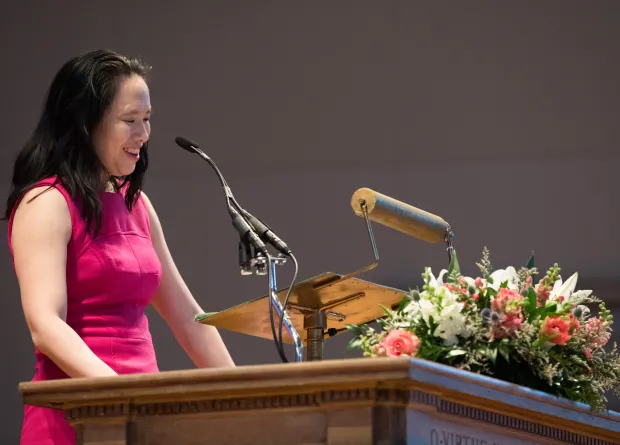
Medals and Awards
With such a vibrant and diverse community and history, Smith College has several distinctions regularly awarded to faculty members, alums, and others.
From the Sherrerd Prizes for Distinguished Teaching to the Smith College Medal, honoring exceptional work and contributions to the college and to the world is a Smith tradition in and of itself.
